Facelift surgery (rhytidectomy) typically involves removing excess skin through an incision made along the border where the ear meets the cheek. During the procedure, not only the upper skin but also the underlying muscle tissue (SMAS) is repositioned.
A proper facelift surgery shapes all layers of the skin in three dimensions.
Pulling one’s cheeks toward the ears in front of a mirror—without distorting the shape of the mouth—can give an idea of the potential effect of the operation.
Excess skin in the chin area (jowl and neck) can be removed with this surgery.
Facial rejuvenation, also known as facelift aesthetics, aims to make you look 10-15 years younger through surgery. Its success depends on the individual’s specific condition.
Suitability for Surgery

If changes in the following facial areas are bothersome, you may be suitable for this surgery:
- Drooping eyebrows
- Sagging eyelids
- Drooping of the cheek skin
- Deepening lines at the corners of the mouth (nasolabial folds)
- Sagging below the jawline (sagging of the bulldog and pre-jawline areas)
- Double chin (submental fat)
- Sagging or excess skin in the neck
Types of Facelift Surgery
Your expectations for the surgery may vary depending on the degree of sagging in your face. In general, there are four types of facelift surgery performed in Turkey. These can be categorized based on the extent of their effect as follows:
Other surgeries that can be combined with facelift surgery:
- Lower Facelift (Double Chin and Neck Lift)
- Brow Lift
- Eyelid Surgery (Upper and Lower Eyelids)
- Upper Blepharoplasty
- Fox eye surgery
- Chin augmentation or reshaping
- Lip Lift
- Forehead Reduction Surgery
- Facial stem cell injection
Endoscopic Facelift
In endoscopic facelift surgery, the incision is made within the hair-bearing skin. Thus, there is no visible scar.

Small incisions are made within the hair-bearing skin around the cheekbones to reposition them upwards.
A small incision is made in the hair-bearing skin of the temporal region to access the subcutaneous tissue. With the help of a camera, both the subcutaneous and fatty tissues are repositioned using strategically placed stitches. Procedures commonly performed alongside this surgery include brow lift and removal of bags under the upper and lower eyelids.
Mid-Facelift
A treatment aimed at eliminating wrinkles and signs of aging in the middle area of the face, not the sides.
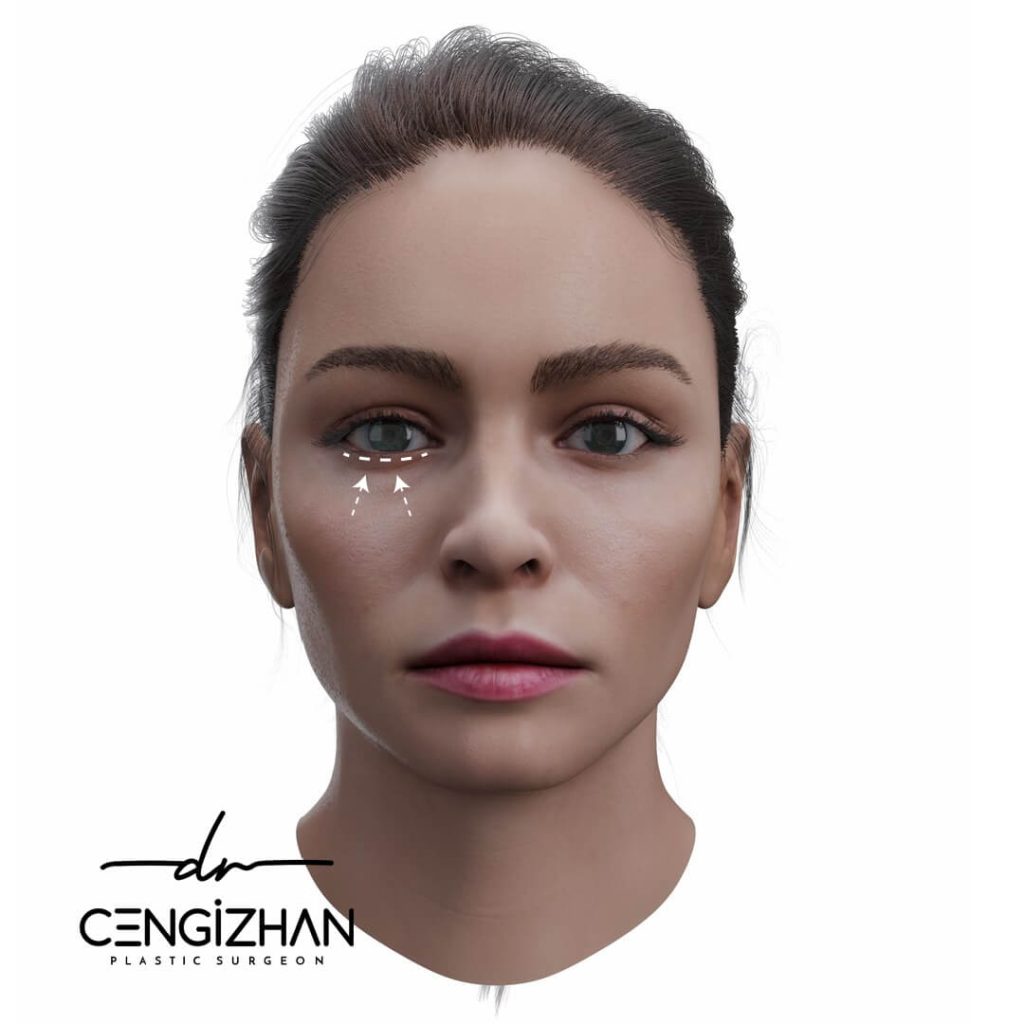
It encompasses interventions in the midface area, which includes the regions around the eyes and nose.
This surgery can be performed with an incision made either from under the lower eyelid (on the surface) or from within the eyelid itself (no visible scar). This choice varies depending on the patient’s condition.
For example, if there is excess skin under the lower eyelid, an incision can be made along the lash line to remove this skin. If there is no excess skin in the lower eyelid area and the goal is to address wrinkles formed from the corners of the mouth towards the nose, then this procedure can also be done with an incision made from within the eyelid.
Mini Facelift
A mini facelift surgery involves removing excess skin and tightening the tissues in the mouth, cheek, and jaw areas through an incision made at the level of the ear.
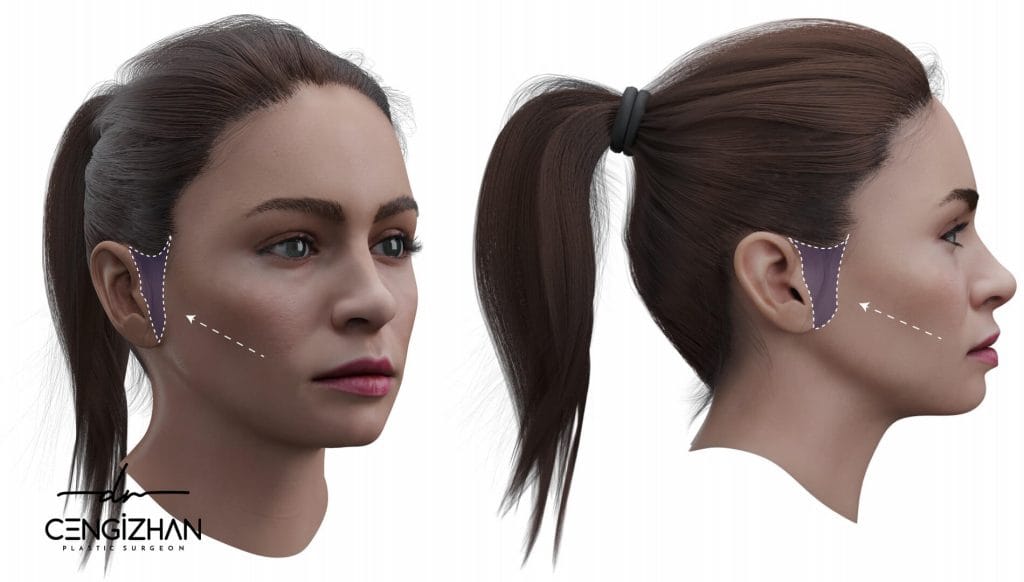
The incision area and the effect of the mini facelift surgery. The length of the incision made in this surgery is about 3-4 cm. Targeted areas include:
- Wrinkles formed under the eyes and on the cheeks
- Wrinkles around the mouth area
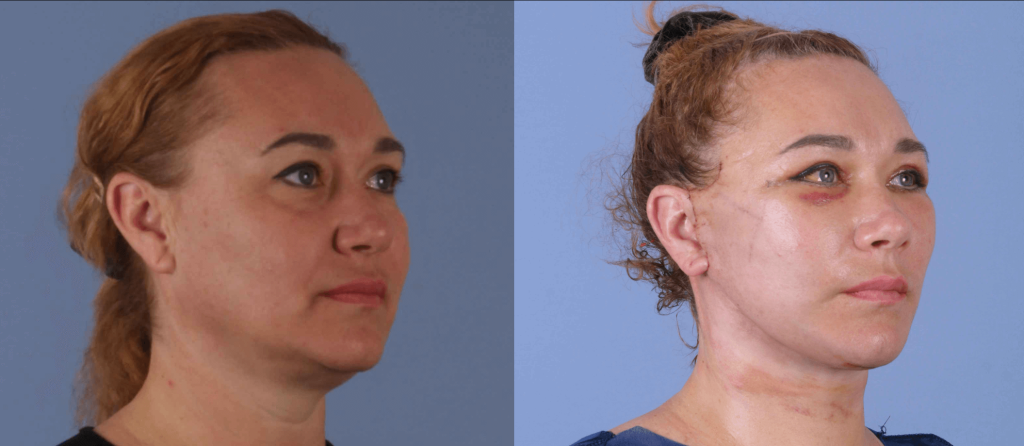
Deep Plane Facelift (Face and Neck lift)
Deep plane facelift, also referred to as full facelift or classic facelift surgery, encompasses the entire face, jaw, (double) chin, and neck areas.
In a deep plane facelift surgery, the incision starts at the border of the ear, similar to the mini facelift. The incision wraps behind the ear, extends to the hairline at the back of the head, and continues downward by an additional 3–4 cm if needed. This additional incision allows for the correction of sagging in the jaw and chin areas, in addition to the sagging around the cheeks and mouth targeted in mini facelift surgery.
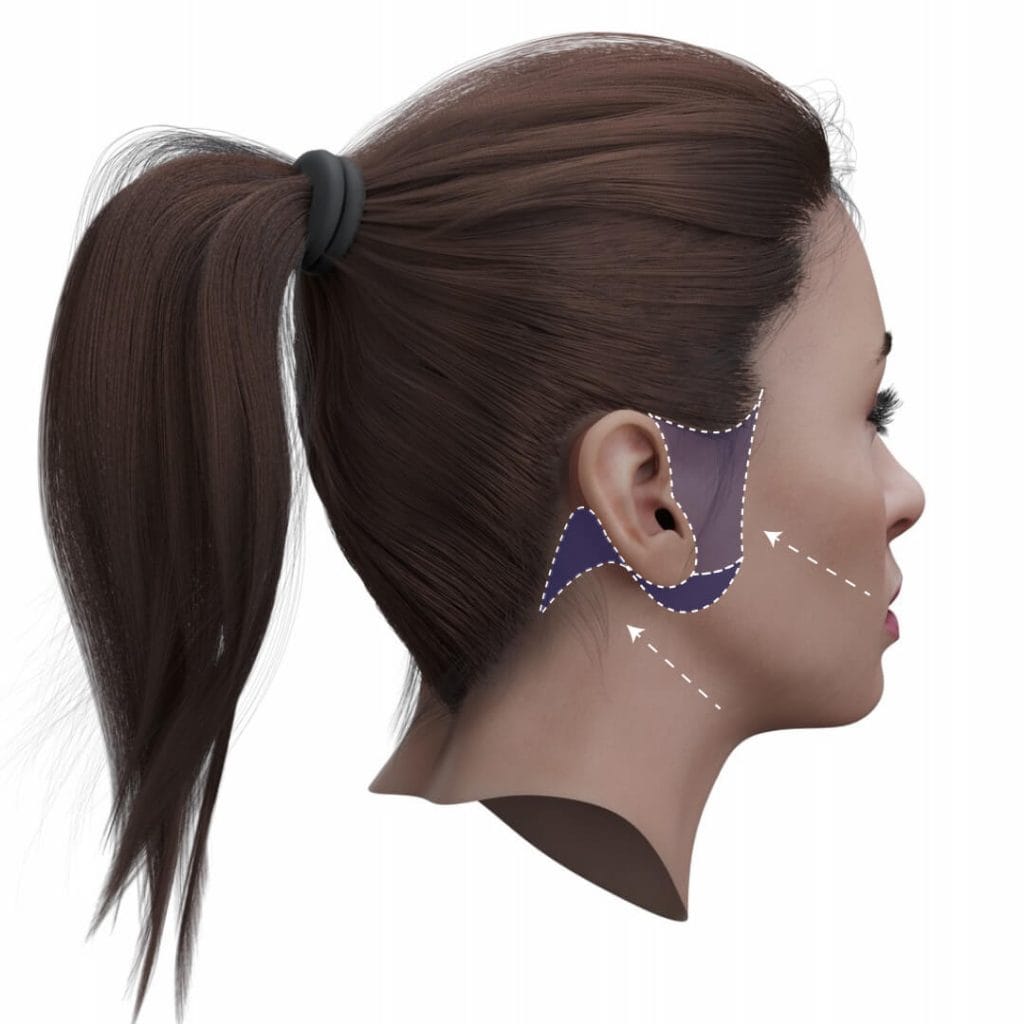
Areas addressed in a total facelift include:
- Sagging skin in the cheek area
- Deepening lines around the mouth (nasolabial folds)
- Sagging below the jawline (Bulldog and Pre-jawline sagging)
- Sagging in the neck area
Surgeries Combined with Facelift Surgery
In this section, we will briefly cover the other surgeries most commonly performed in conjunction with facelift surgery.
Brow Lift: This surgery is performed through an incision hidden within the hair-bearing area of the temporal region. Skin is removed as needed to lift the brow, and the incision is then closed. Since it is located within the hair-bearing skin, the scar is not visible.
Eyelid Surgery (Upper and Lower Eyelids): You can eliminate the aged appearance caused by drooping and fat accumulation in the eyelids. A fresher look is achieved by removing excess skin through an incision made in the upper eyelid.
Chin Augmentation Surgery: Chin augmentation surgery can be performed to lengthen the face or achieve a more prominent chin profile. This surgery can also be performed along with procedures such as fat injection to create a sharper jawline.
Lip Lift: Drooping of the upper lip can be corrected and made to appear fuller through an incision made under the nose, similar to the one used in nose surgery.
Forehead Narrowing Surgery: This surgery is performed by making an incision just at the end of the hair-bearing skin for individuals with a wide forehead.
Buccal Fat Removal: It is the process of removing fat in the cheeks through liposuction. The goal of the operation is to achieve more prominent cheekbones.
Facial Stem Cell Injection: It is a treatment that enhances the overall quality of our skin. It involves enriching the facial area with stem cells by injecting fat tissue taken from the abdomen. The treatment leads to faster wound healing.
Facelift Surgery Steps
You can find “How is facelift surgery performed?” in this section. Although there are many combinations, the basic steps are as follows:
- Drawings are made for the planned areas with the patient before the surgery.
- If chin augmentation is included, an incision of 1-1.5 cm is made under the chin, and liposuction is performed to remove the fat.
- Again, in the chin area, the two basic muscles located under the chin are lifted upwards by stitching them together.
- An incision starting from the ear area is made. This incision, for mini facelifts, extends 3-4 cm from the ear-cheek line, up to behind the ear for total facelifts, and up to the hairline in neck lifts.
- The excised skin is lifted, and the fat tissue underneath is reshaped, while nerves and muscles are preserved and sutured to prevent future skin loosening.
- Excess skin is gathered in the incision area around the ear and marked with exact addresses before cutting. This ensures a fully symmetrical and smooth fusion of the skin when stitched.
- Excess skin is removed, and all layers of the skin are stitched with different types of sutures (fibers, muscles, fat tissue, and upper skin).
- A drain is attached, and the surgery is completed.
Surgical Process
- By examining the patient’s photographs from their younger years, the direction of facial deformation is determined to guide surgical planning. The procedure is then planned accordingly.
- Photographs are taken both before and during the surgery for reference.
- You can have this surgery under local anesthesia, as well as under general anesthesia or sedation.
- The surgery will last between 2-4 hours.
- A light bandage is applied after the surgery.
- You may need to stay in the hospital for 1 day after surgery, or you may be discharged on the same day, depending on the situation.
Postoperative Period
- Some swelling and pain in the face are common, with bruising possibly occurring to a lesser extent. These symptoms typically decrease after the first week.
- You will need to come to the clinic the day after the surgery. Dressings and drains are removed.
- A corset is worn instead of a loose bandage on the second day.
- You can shower after the third day.
- Since your stitches will be absorbable, they will fall out on their own.
- You can return to work and apply makeup after 1 week.
- You can walk and do light exercise after 2 weeks.
- You can resume contact sports, such as basketball, after 4 weeks.
Facelift Before and After (Frontal View)
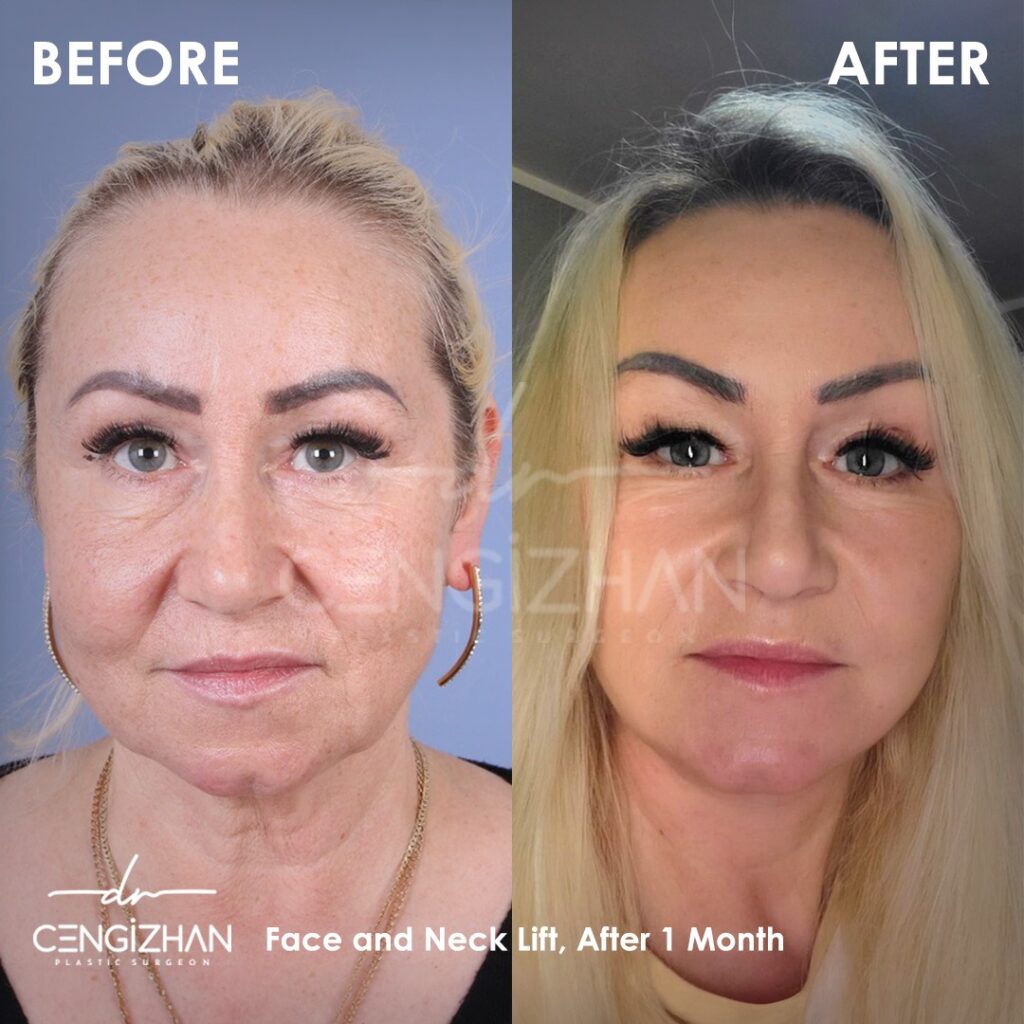

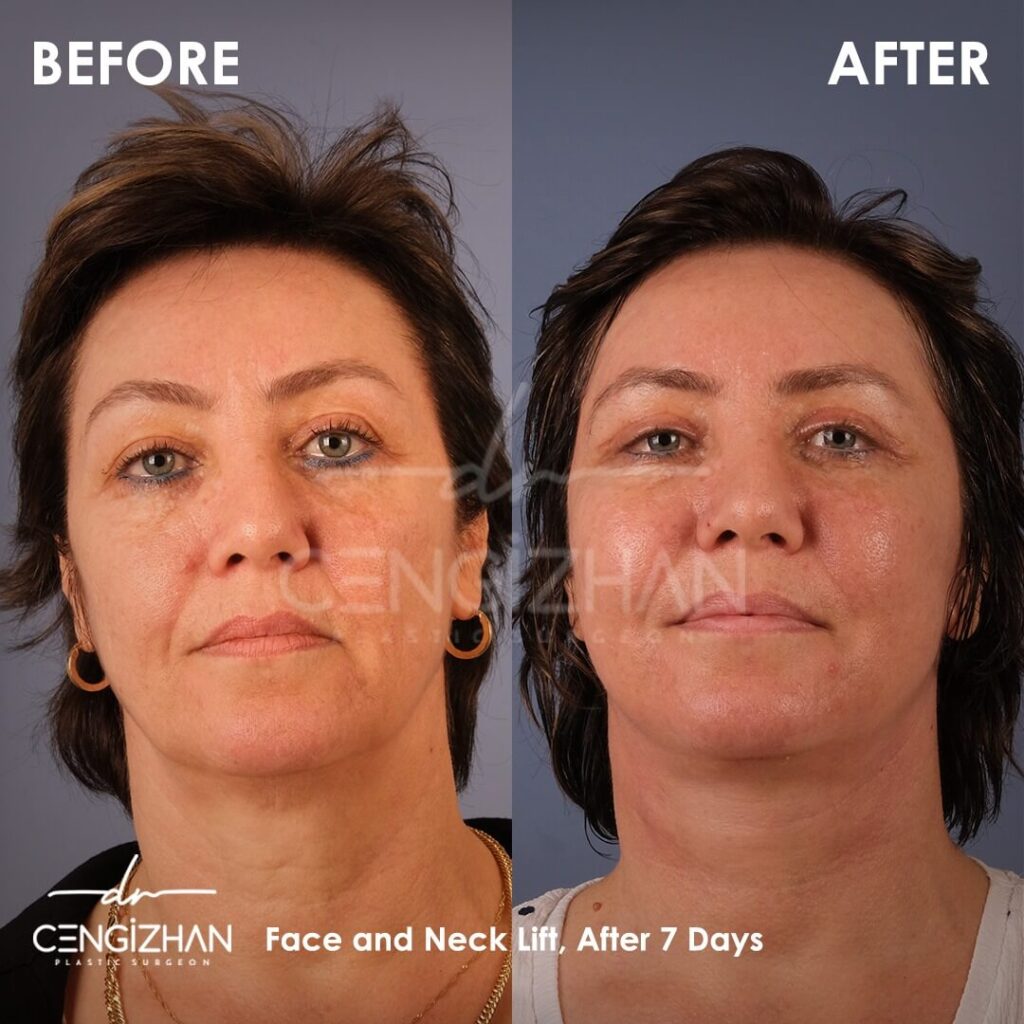
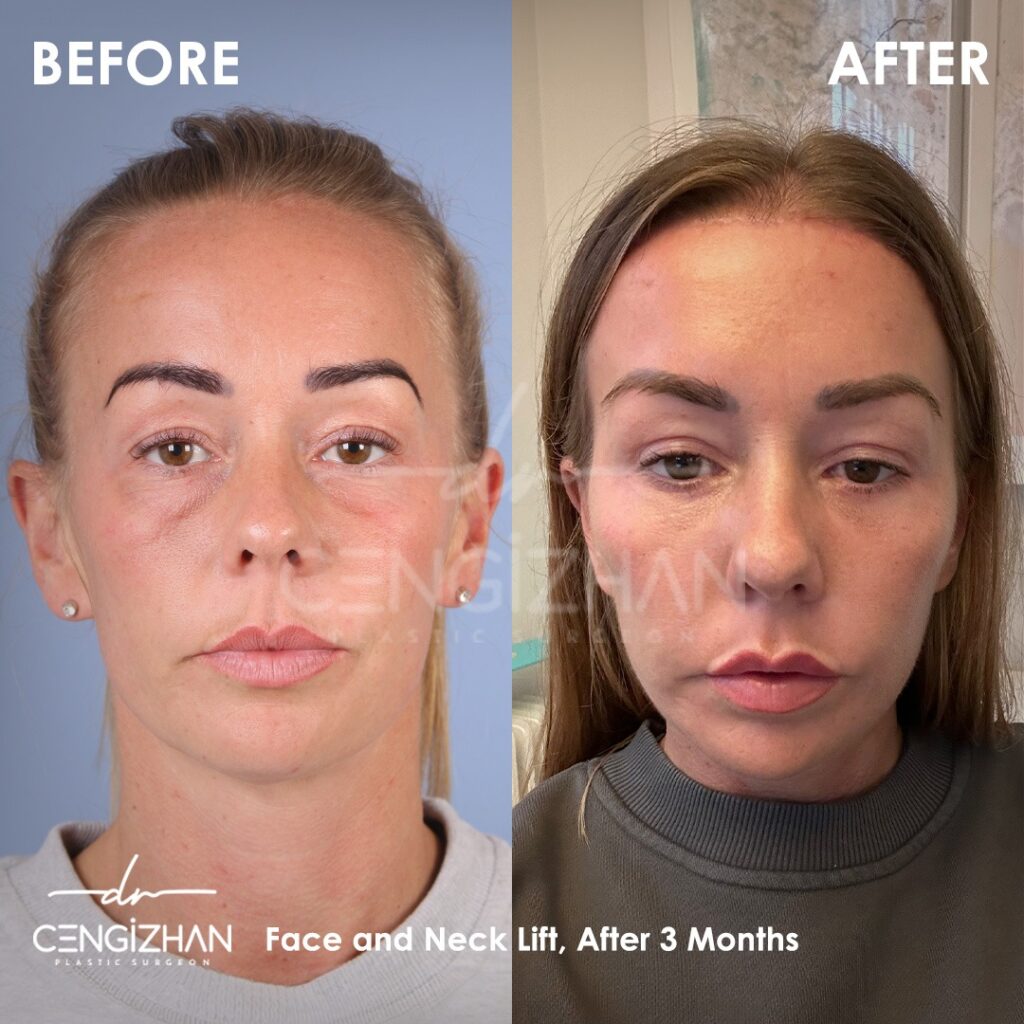
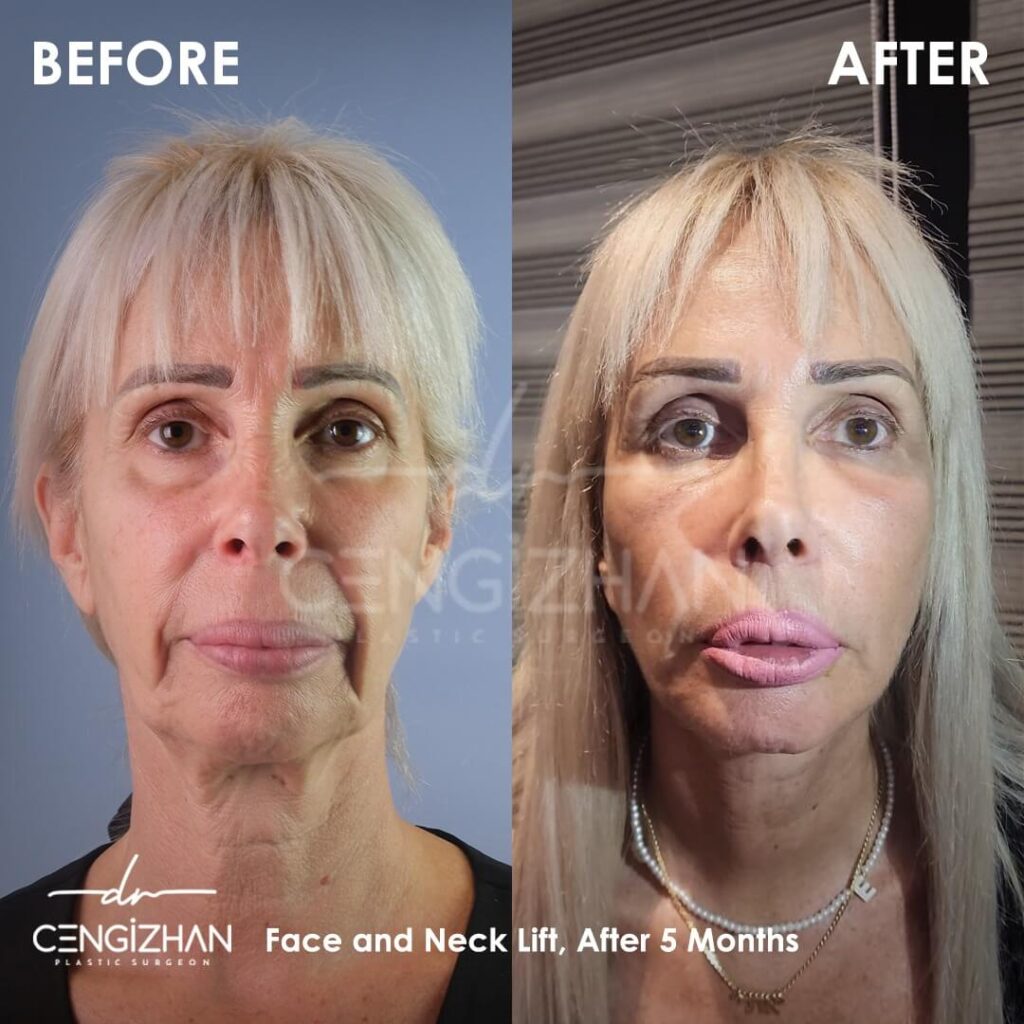
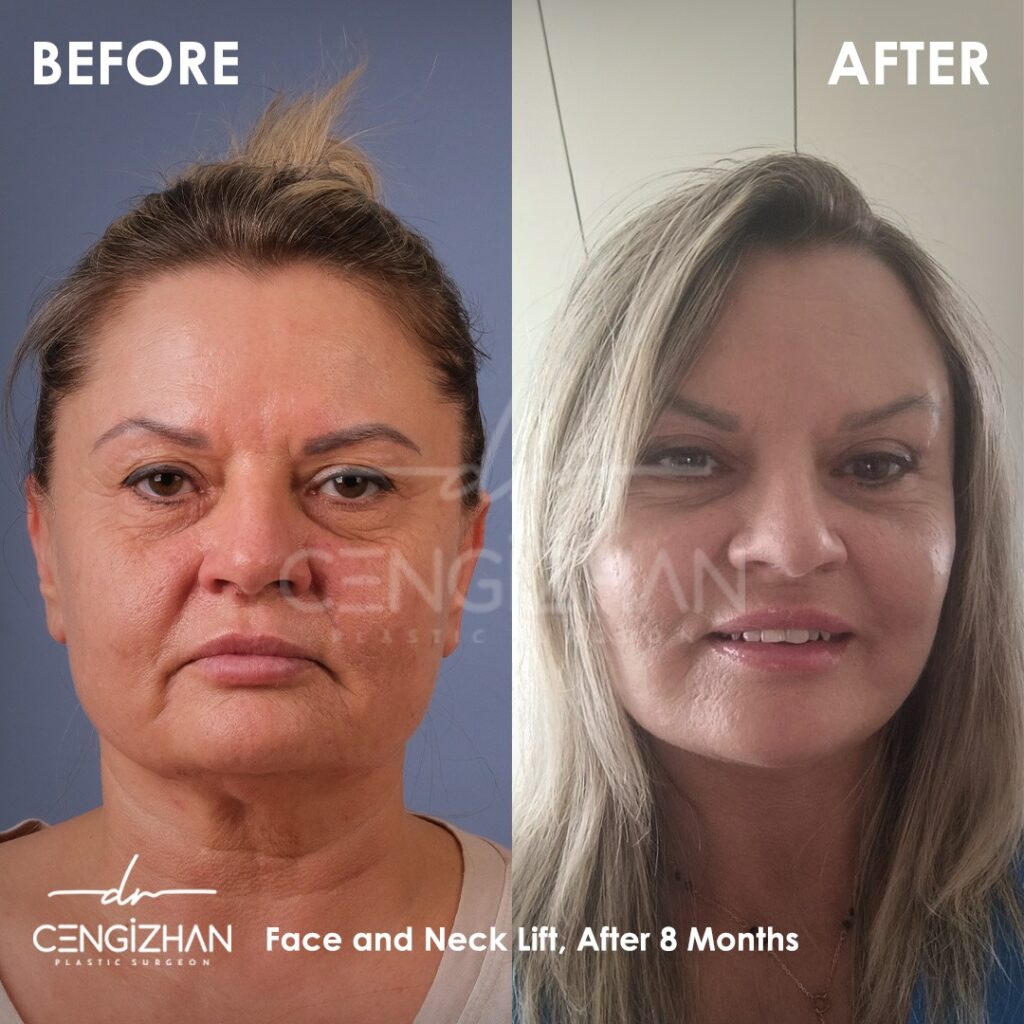
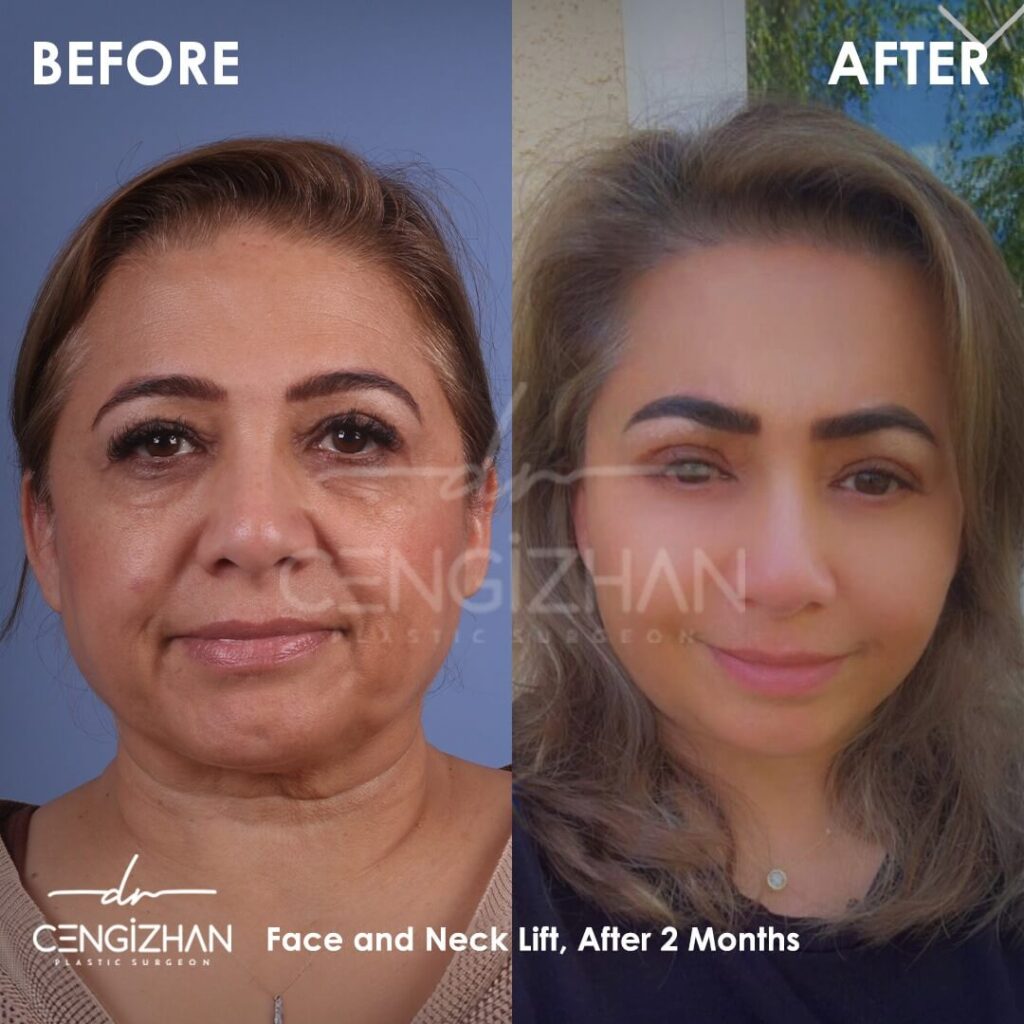
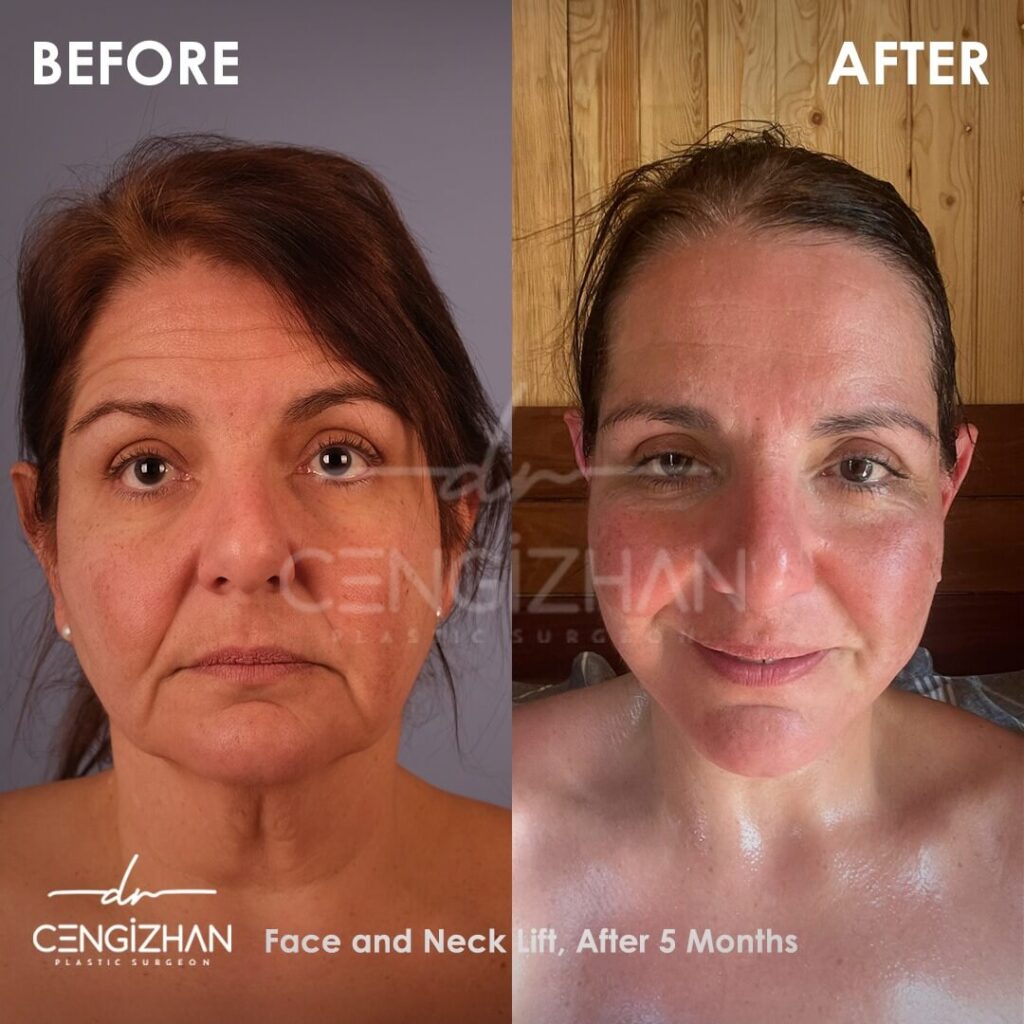
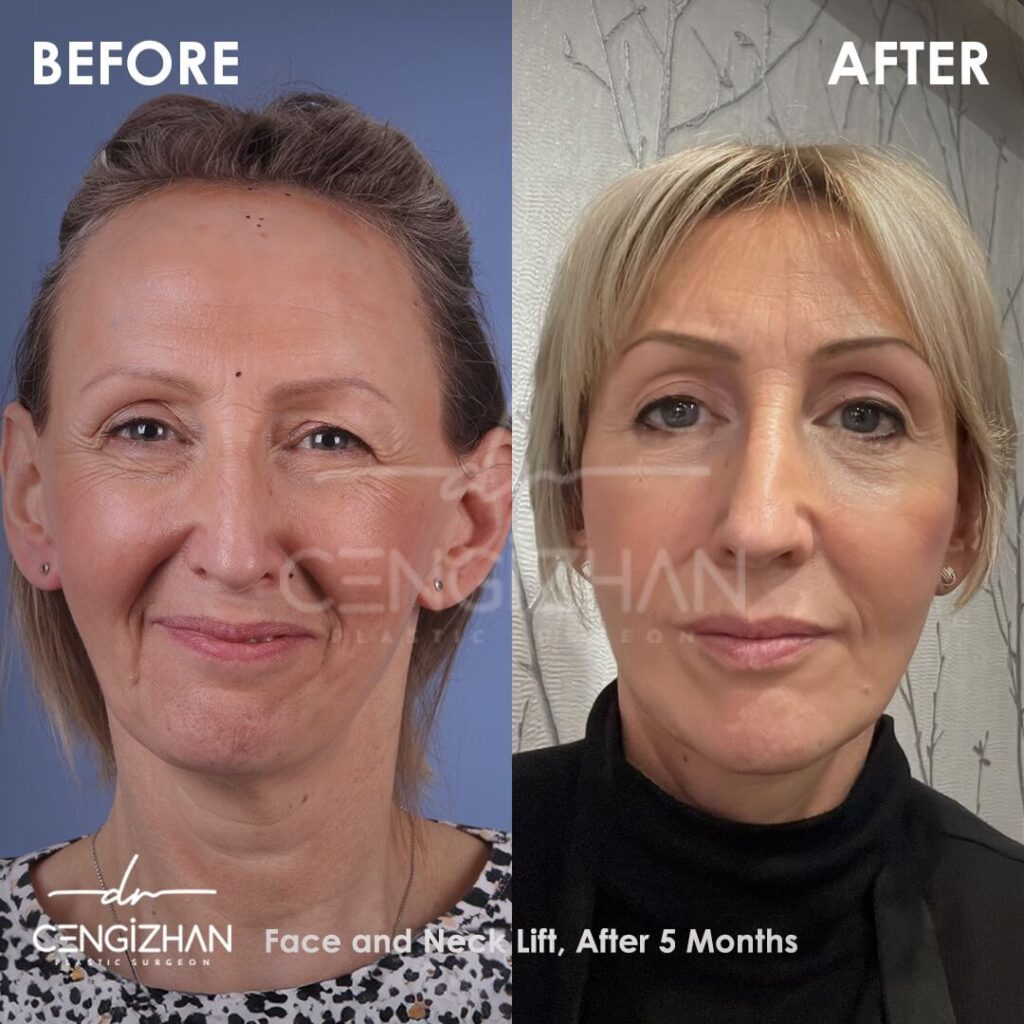
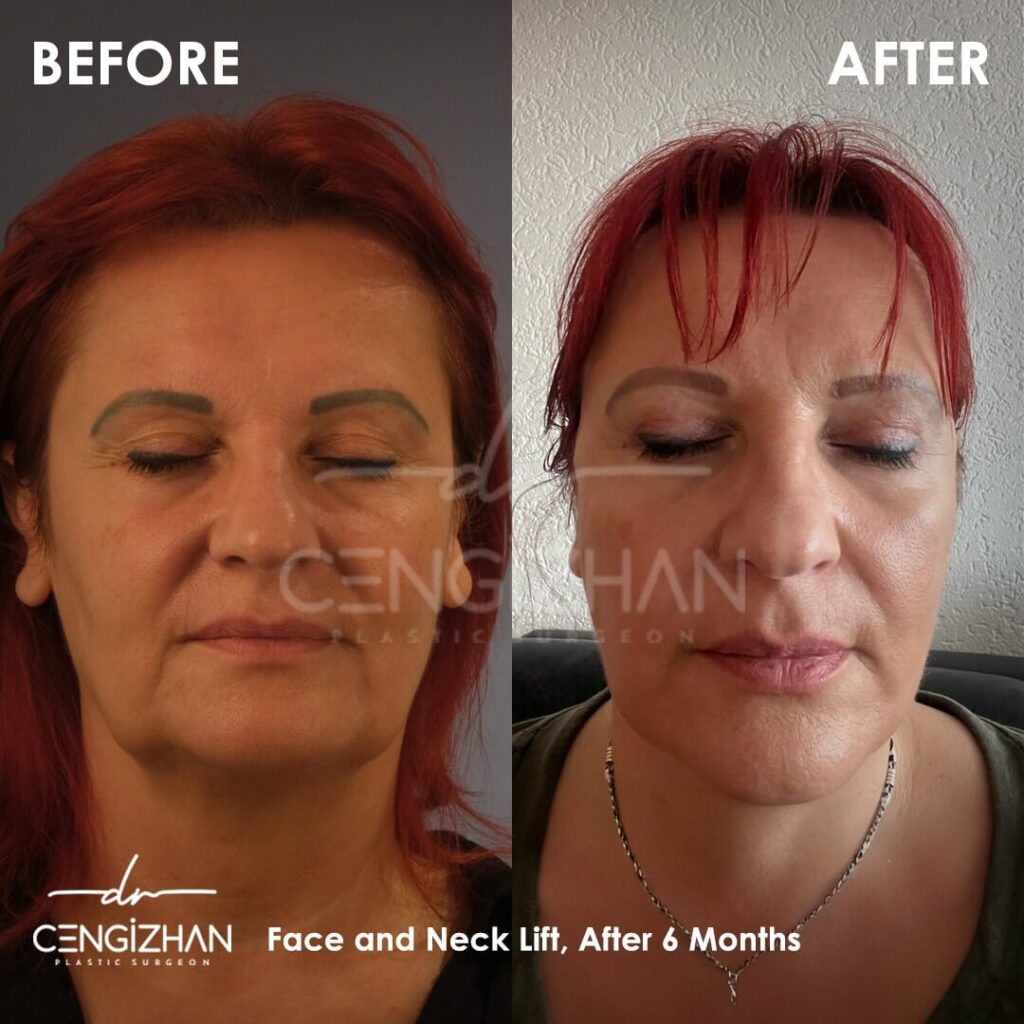
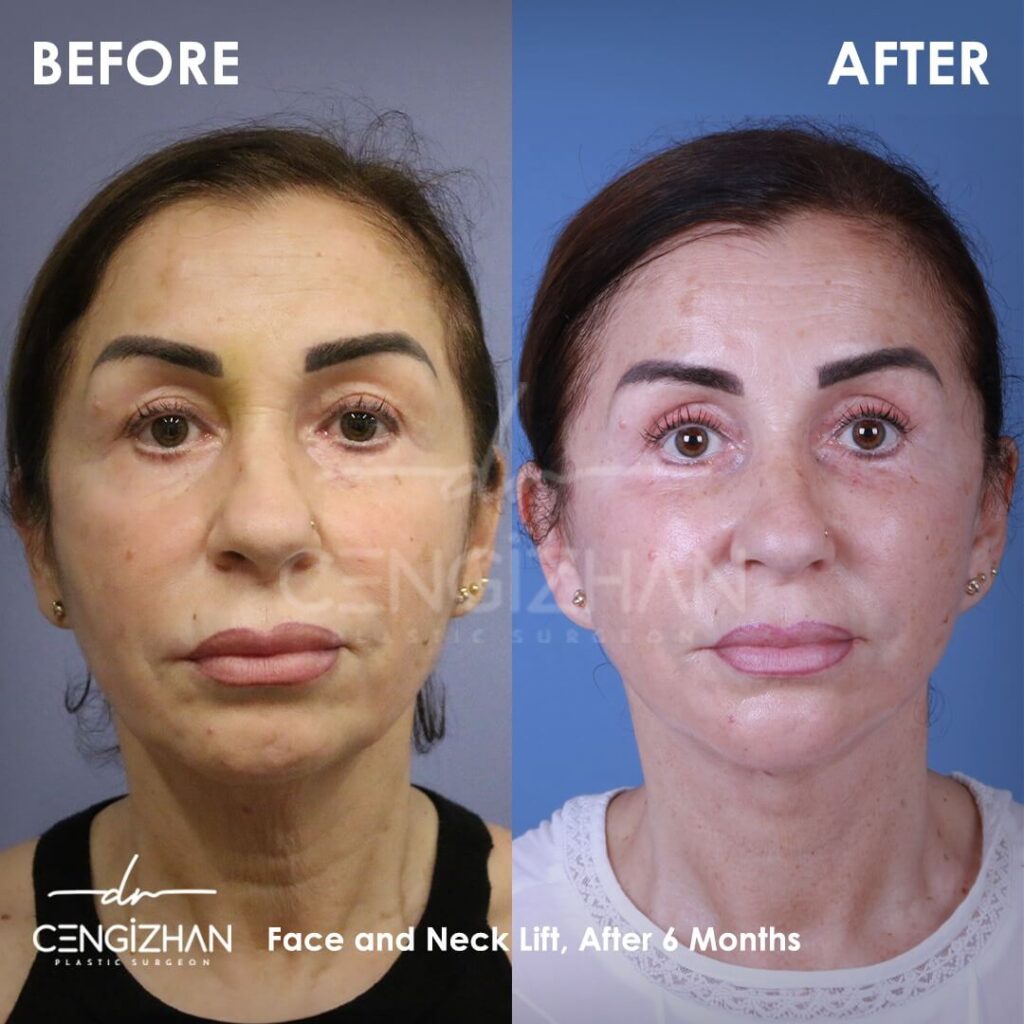
Facelift Before and After (Side View)
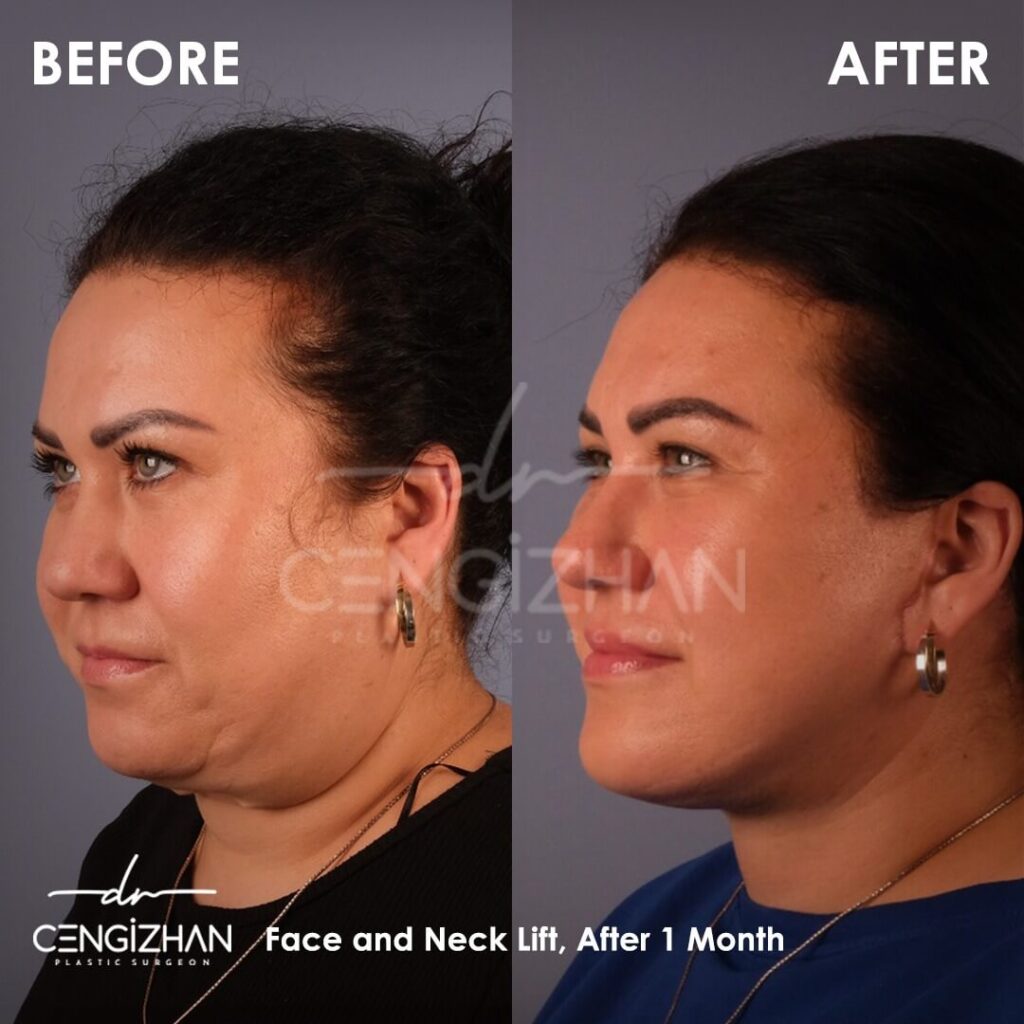
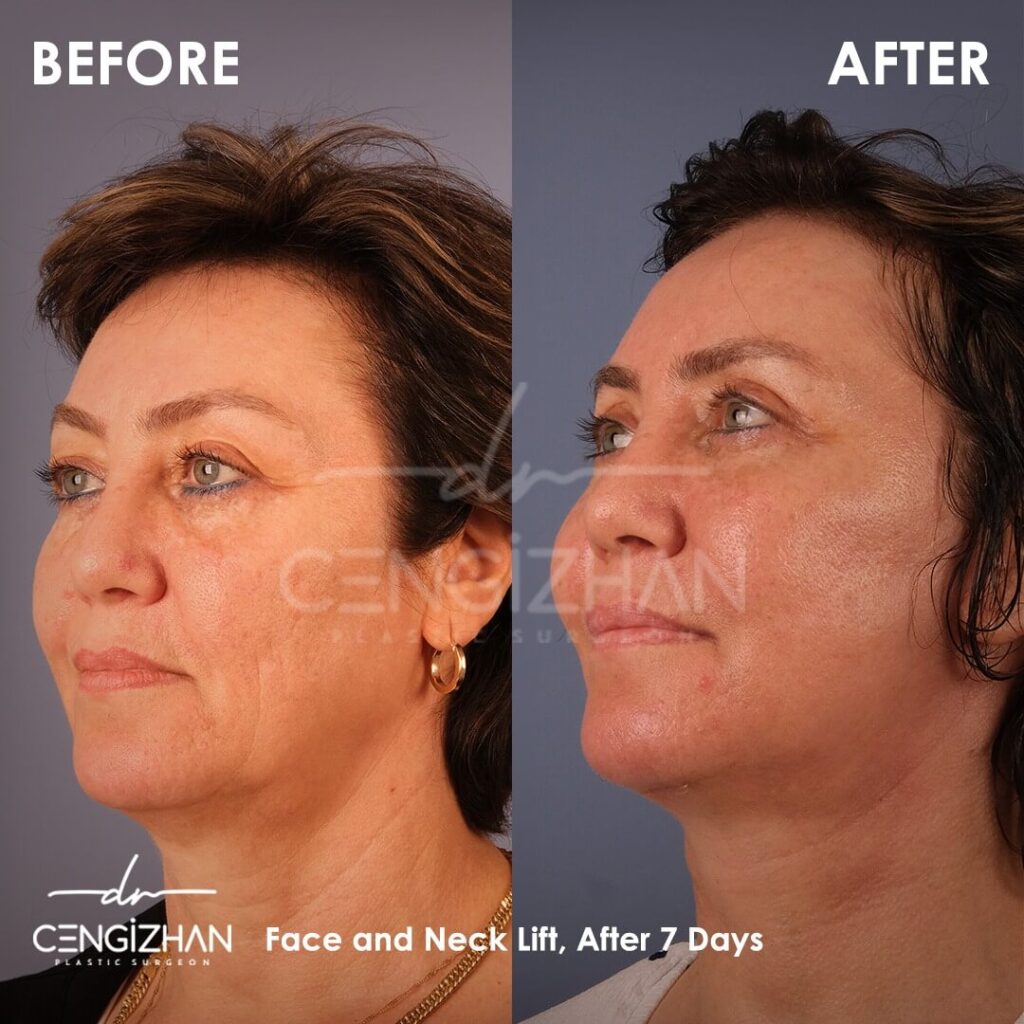

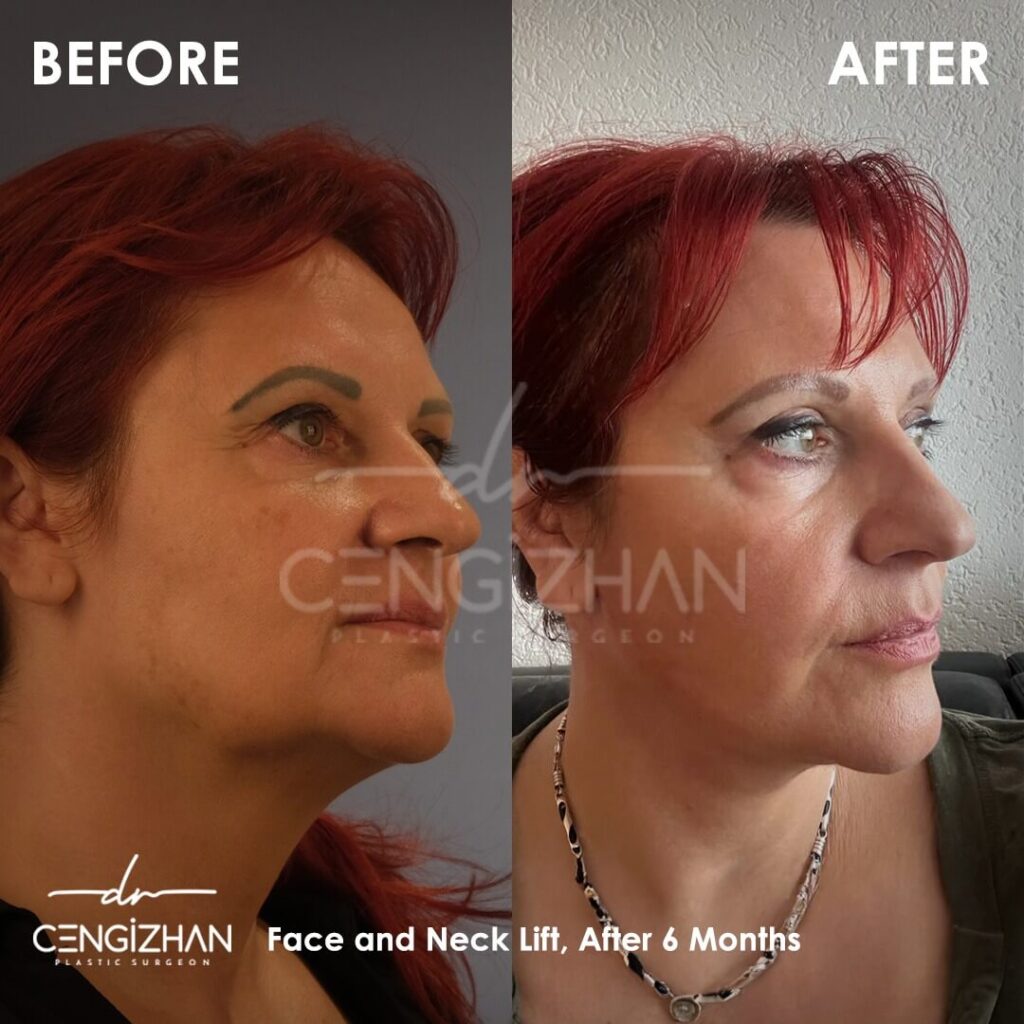
Dr Cengizhan Ekizceli’s Review about Facelift
Frequently Asked Questions
Is there a risk of facial paralysis?
The facial nerves extend from the chin to the cheeks in five branches. The surgeon needs to preserve these nerves during the operation. Temporary numbness of the muscles and nerves may occur afterward, causing asymmetry in facial movements. However, these symptoms are expected to improve over time.
What is the recovery process like?
Only skin layers are incised and stitched in a facelift operation, with no vital organs affected by human metabolism. Therefore, the recovery process is approximately two weeks. Swelling and bruising may occur in the first three days but gradually decrease over time.
Post-operative recovery:
- 50% recovery in the first 2 weeks
- 80% recovery after 4 weeks
- 100% recovery may take up to 6 months, depending on the operation’s scope and method.
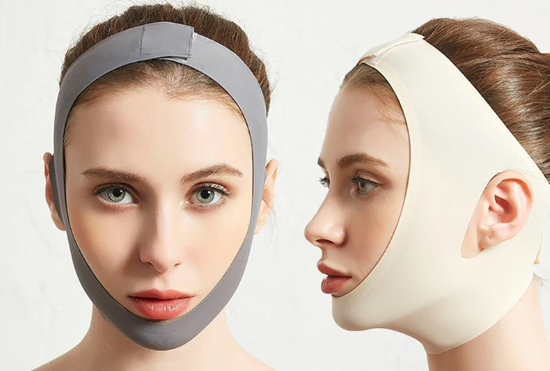
How long does the effect last?
The duration depends on the method and extent of the operation. Based on an individual’s condition and lifestyle, the effects can last anywhere from 10 to 15 years.
Can the longevity of a facelift be increased?
Yes. Maintaining a healthy lifestyle—avoiding smoking and alcohol, managing stress, and protecting the skin from sun exposure—can extend the longevity of a facelift to 15 years or more.
How much tightening can be done?
The amount of tightening depends on the individual’s skin elasticity. Tightening is typically performed up to the point where pressing the cheeks by hand does not distort the shape of the mouth.
At what ages can it be done?
Typically, it’s performed on individuals aged 40 and above, depending on the elasticity of the skin. However, it can be performed after the age of 20, depending on rapid weight fluctuations or certain metabolic conditions.
What causes sagging in the face?
The primary cause is genetic factors. Skin elasticity decreases due to external factors such as gravity, resulting in wrinkles.
Factors Causing Wrinkles on the Face:
- Exposure to sunlight without protection
- Smoking
- Rapid weight gain or loss
- A decrease in collagen as we age
These conditions can cause sagging of the skin.
How can wrinkles on the face be prevented?
Facial expressions are made through the muscles in our face, and excessive use of these muscles can contribute to wrinkle formation. Botulinum toxin injections can be used to reduce muscle activity, thereby minimizing wrinkles.
Additionally, protecting the skin from sun exposure is very important to prevent premature aging.
What is a non-surgical facelift?
Non-surgical facelift procedures include:
- Cosmetic tapes
- Fillers and Botox (Liquid Facelift)
- Ultrasonic treatments (ThermiSmooth Face)
- Laser applications
- Platelet-rich plasma (PRP) and Stemcell treatments (Vampire Facelift)
These treatments offer more limited and shorter-term effects, typically lasting from 6 months up to 1–2 years.
Will there be a scar?
The incision area can be seen between the ear and the cheek. However, since this area is a boundary/transition area, it will not be seen as clearly as a normal incision. The incision remaining in the hairy skin area is almost invisible because it is already covered with hair.




